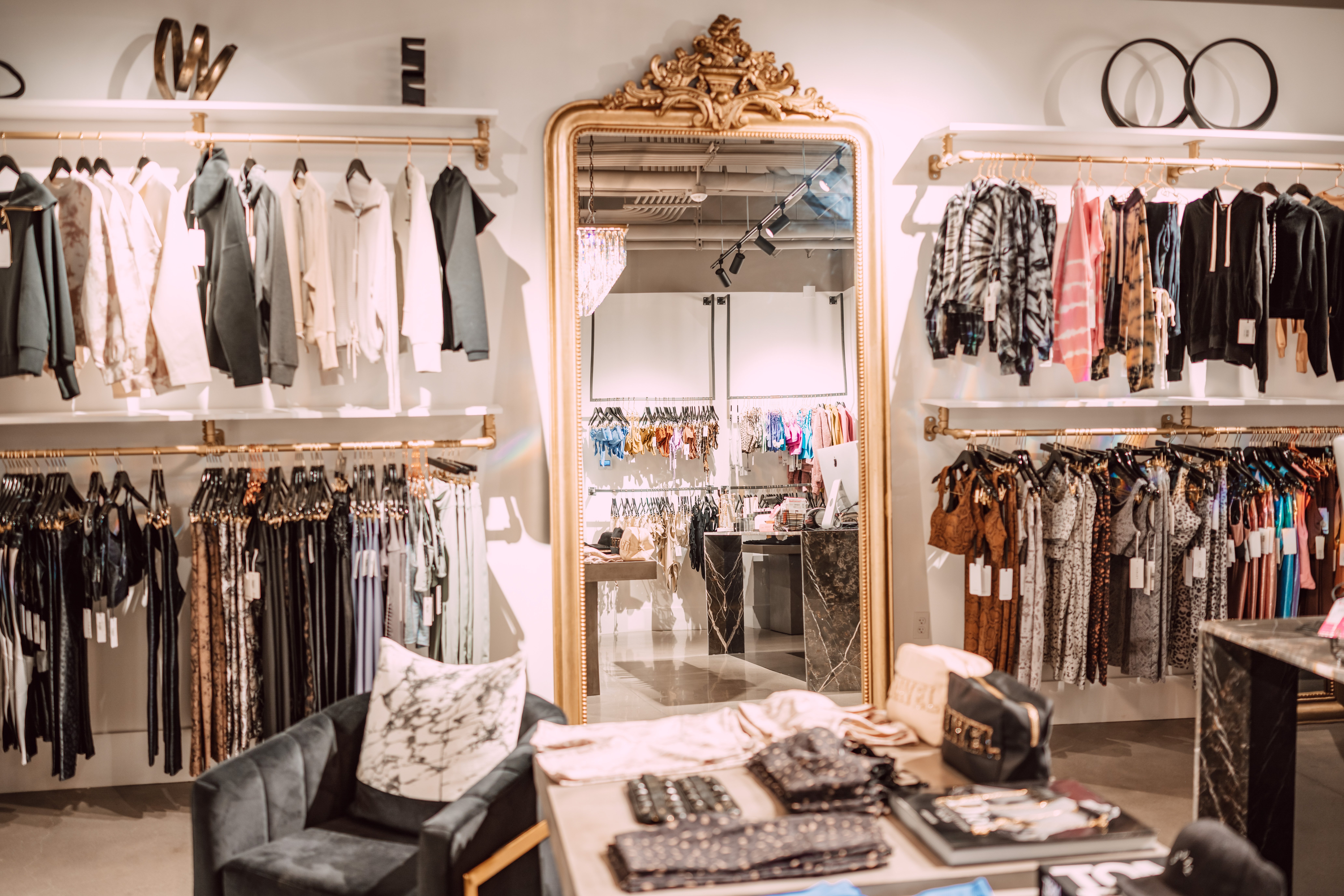Discovering the Evolution and Impact of Apparel on Modern Fashion Trends
The development of garments has actually significantly affected modern-day fashion trends, combining historical criteria with cutting-edge innovations. Iconic numbers like Coco Chanel and Yves Saint Laurent changed the style market by introducing concepts that focus on convenience and availability, which proceed to resonate today.
Historical Fashion Influencers
In the tapestry of fashion background, particular numbers have left an indelible mark, forming the patterns and styles that define entire eras. Coco Chanel, an innovative designer, redefined females's style by introducing comfortable, elegant clothes that departed from restrictive bodices. Her legendary Chanel match and little black gown have ended up being ageless staples in wardrobes worldwide. Similarly, Christian Dior's post-war "Make over" in 1947, with its celebration of feminineness via complete skirts and cinched midsections, marked a go back to opulence and has actually remained to influence developers.
Elsa Schiaparelli is one more pivotal number, renowned for her avant-garde styles that incorporated surrealist art, working together with Salvador Dalí to create wayward items that challenged conventional aesthetic appeals. Her cutting-edge use shade and bold patterns resounds in modern fashion. Yves Saint Laurent, meanwhile, equalized haute couture with prêt-à-porter collections, bringing path styles to the masses and establishing a precedent for contemporary ready-to-wear lines.
These dreamers, to name a few, not just revolutionized style in their times but likewise established enduring patterns that reverberate in today's fashion market, providing a foundation upon which modern-day developers continue to construct and innovate. Their legacies highlight the importance of imagination and bold in fashion's ever-evolving story.
Technical Developments in Style
Amidst the dynamic landscape of the fashion business, technological advancements stand at the forefront of development, improving how designers develop and consumers engage with style. The assimilation of 3D printing has actually changed layout processes, enabling designers to experiment with complicated structures and sustainable materials that were formerly inconceivable. This innovation promotes quick prototyping, reducing waste and quickening production times.

Smart textiles, embedding technology right into textiles, are likewise changing the market. Innovations like self-cleaning and temperature-regulating fabrics use enhanced capability and convenience. Wearable technology, including attributes like fitness tracking and communication, includes a brand-new dimension to fashion, combining visual appeals with practicality.
Social Shifts and Style
As technical advancements continue to reshape the fashion business, cultural shifts are just as prominent, redefining design and consumer preferences. In the last few years, the increase of social networks systems has actually accelerated the circulation of worldwide style fads, allowing varied social influences to converge and coexist. This digital interconnectivity has facilitated the quick exchange of ideas, causing a more eclectic and comprehensive interpretation of style that reflects the complex nature of contemporary society.
Cultural awareness and gratitude have prompted developers to attract ideas from a broader range of ethnic and historic contexts, integrating conventional themes with modern appearances. This combination has resulted in style that reverberates with a broader target market, promoting a feeling of identity and belonging throughout various demographics. Furthermore, the increasing demand for personalization has actually driven brand names to use adjustable choices, enabling customers to express originality while mirroring their social heritage.
Additionally, shifting societal worths have actually impacted fashion, with inclusivity and diversity becoming central themes. The sector has actually begun to accept designs and influencers of numerous body types, ethnic backgrounds, and gender identifications, tough traditional beauty requirements. This transformation underscores the power of cultural changes in shaping the future of style, as style comes to be an extra authentic expression of cumulative and individual identification.
Sustainability and Modern Layout
While the style market proceeds to advance, the important for sustainability has actually come to be significantly immediate, affecting modern-day layout techniques. The rise of sluggish fashion, which emphasizes quality over quantity, encourages consumers to invest in timeless pieces rather than transient patterns.
Furthermore, contemporary layout is characterized by its advancement in decreasing waste and promoting circularity. Methods such as zero-waste pattern cutting and 3D knitting are getting grip, allowing designers to produce garments with marginal fabric wastage. In addition, brand names are taking on transparent supply chains, guaranteeing responsibility and cultivating consumer trust. This strategy not just alleviates environmental impact yet likewise enhances the social duty of fashion houses.

Future Trends in vogue

Sustainability will remain to be a driving force Bonuses in shaping future style fads. The sector is significantly adopting environment-friendly materials and ethical manufacturing methods, reacting to a growing consumer need for accountable practices. Innovations such as bio-fabricated products and closed-loop recycling systems are set to redefine how garments is produced and eaten, decreasing ecological impact while keeping style and top quality.
Cultural changes, including the surge of important source inclusivity and diversity, will certainly also play a crucial role. As culture becomes a lot more knowledgeable about social concerns, fashion is anticipated to end up being a platform for expression and modification. Designers will likely concentrate on creating collections that show a wider variety of experiences and identifications, promoting depiction and access.
Final Thought
The evolution of clothes significantly affects modern fashion fads, where historical impacts combine with contemporary styles. This recurring advancement underscores fashion's role as a mirror to social values and technical development, recommending a future abundant with innovation and inclusivity.
The evolution of clothes has dramatically affected modern style patterns, combining historical precedents with advanced technologies.Amidst the dynamic landscape of the style industry, technological improvements stand at the leading edge of technology, reshaping exactly how designers develop and customers engage with fashion.While the fashion sector proceeds to develop, the crucial for sustainability has actually come to be progressively immediate, influencing additional info modern-day style techniques. As sustainability ends up being embedded in modern-day design, it leads the method for an extra accountable and conscious style industry.
The evolution of apparel dramatically affects modern style trends, where historic impacts merge with modern designs.